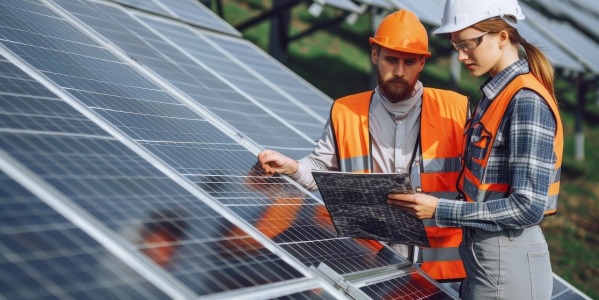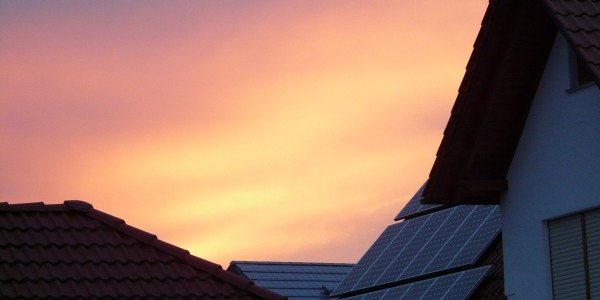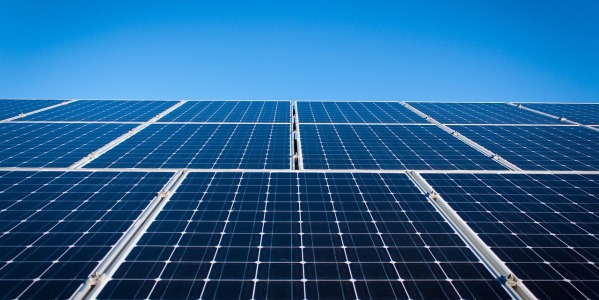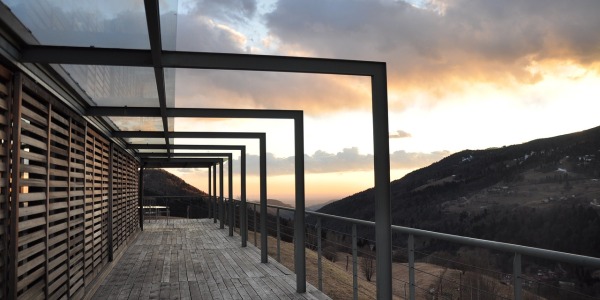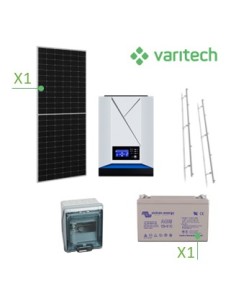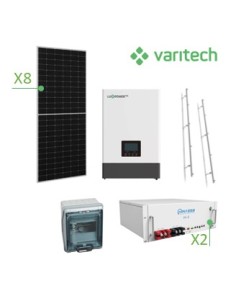- Redacción Varisolar
- Autoconsumo
- 0 likes
- 2724 views

How does an isolated photovoltaic installation work?
An isolated photovoltaic installation is one designed to operate outside the electrical grid, in rural environments.
An isolated photovoltaic installation is one designed to operate outside the electrical grid, in rural environments. However, if there is an electrical network, it can be supplied from it as a backup or continuously (totally or partially).
What is an isolated photovoltaic installation?
Isolated photovoltaic installations are supplied with photovoltaic solar energy sources, or other types such as wind, to supply an electrical supply. As these sources of energy cannot be managed (they depend on intermittent natural resources), they have a backup battery to store the energy. In this way it is possible to have it when necessary, even at times when it is not always windy or sunny.
In many cases, it is recommended that these types of installations be supported. Well, as said before, they depend on intermittent energy sources that lack reliability.
Electric generator for isolated installations
The most normal way to back up the batteries of an isolated photovoltaic installation is by means of an electrical generator that runs on gasoline or diesel. Although it is also possible through a nearby electrical network.
The mission of these generators is, while they are active, to meet the instantaneous need for supply, and at the same time charge the batteries to generate backup. For this reason, it is vitally important to adequately size the generator, since it has to deal with double consumption effectively.
The start of this generator can be manual at the user's request. Another option is the automated way from the installation control system, so that the supply remains automated without user intervention.
In small powers, it is common to find gasoline generators (cheaper and lighter), and in large powers or where there is very intensive use, diesel generators (more expensive but more durable and with less fuel consumption).
Components of an isolated photovoltaic installation
We have already introduced the generation elements (solar panels and generator sets) and the energy storage elements (batteries). Now it's time to introduce those devices that make everything work and energy flow.
Here we find several elements.
Solar charger
It is an element that connects between solar panels and batteries. It allows these to be charged using the available energy captured by the panels.
Within this category we find two types of solar chargers:
PWM chargers: They connect the panel directly to the battery and disconnect it when it is fully charged, maintaining a maintenance voltage. They are the most economical but require the panel to be voltage compatible with the battery that is connected and they are not very efficient.
MPPT chargers: These allow the panel to be coupled with the battery so that the previous one extracts its maximum available power, and can improve performance by up to 30% compared to the previous ones in terms of energy. However, their cost is obviously higher, although they allow any type of panel to be connected to the batteries regardless of the voltages (except for the input range itself defined in the MPPT charger technical sheet).
Electric charger
It is the element that is connected to the diesel/gasoline electric generator and that charges the batteries.
In the market there are electric chargers of many brands separately.
Investor
The inverter is an element that allows the generation of single-phase alternating current at a voltage of 230V. And therefore, establish a stable power supply by connecting to a battery.
Within this category we find a large number of very different equipment and disparate powers, from 100W to 10,000W. The important thing is to recognize the different types and know how to choose them.
Modified wave inverter. This generates a 230V voltage but with a lot of harmonic distortion and therefore they are only suitable for light bulbs, motors and similar loads that are not of an electronic type. They are cheaper and their use is not recommended for homes, but rather for emergency or punctual use.
Pure wave inverter. It generates a voltage with a waveform very similar to that found in the public electrical network. Therefore, they are suitable and compatible with all AC electrical devices. It is very important to take special care with motors, so that the size of the inverter is always double or more than the size of the motor to be connected, otherwise they can jump due to the disturbance caused by the sudden start of the motor.
We also find inverters that integrate all these pieces into a single piece of equipment, so that it is very practical to install and start up. The downside is that a breakdown in this equipment will leave the entire installation useless. In addition, it is not as versatile or configurable as a separate installation, but its good sales prices have led most domestic installations to take this path.
Hybrid investors. Hybrid inverters have recently appeared with the emergence of self-consumption facilities. It is very important to note that this type of inverter is not necessarily a stand-alone inverter. Since they only have batteries to store excess energy and that can be used when there is no sun, but they work in parallel with the electrical network and when it goes down, they turn off so as not to work on the island.
There are brands that we distribute at Varitech, such as Luxpower or Goodwe that do work in a mixed way. These have a backup output so that they can maintain the supply in the event of a blackout, as they have the capacity to disconnect the Endesa network from the home and generate their own dedicated electrical network for the home while the blackout lasts, using the existing batteries, and charging with the existing solar panels (in what we call offgrid mode).
In addition to this, they allow surpluses to be stored, injected into the grid when the batteries are fully charged, like any hybrid inverter. As we have said, they are peculiar but very versatile investors. But we do not recommend them for isolated use, since if there is no network, there are even better solutions on the market such as inverters expressly dedicated for when there is no network, which even have an integrated control system to start the generator when the battery is low. We are talking about the voltronic inverters that we distribute at Varitech.
High power isolated installations
Finally, there is a category of isolated installations that are high power (>5kW) that are not treated in the way that have been explained before and must be addressed with other existing technology on the market and in which we are specialists at Varitech, with many success stories, called "AC-Coupling". This is valid for domestic and industrial purposes, but we will have to talk about it in a future installment, since its operation, design, and considerations are totally different.
At Varitech we offer you personalized solutions. Contact us and we will advise you on the type of photovoltaic installation that best suits your needs.
We are specialists in isolated photovoltaic installations in Granada.
Últimos artículos



